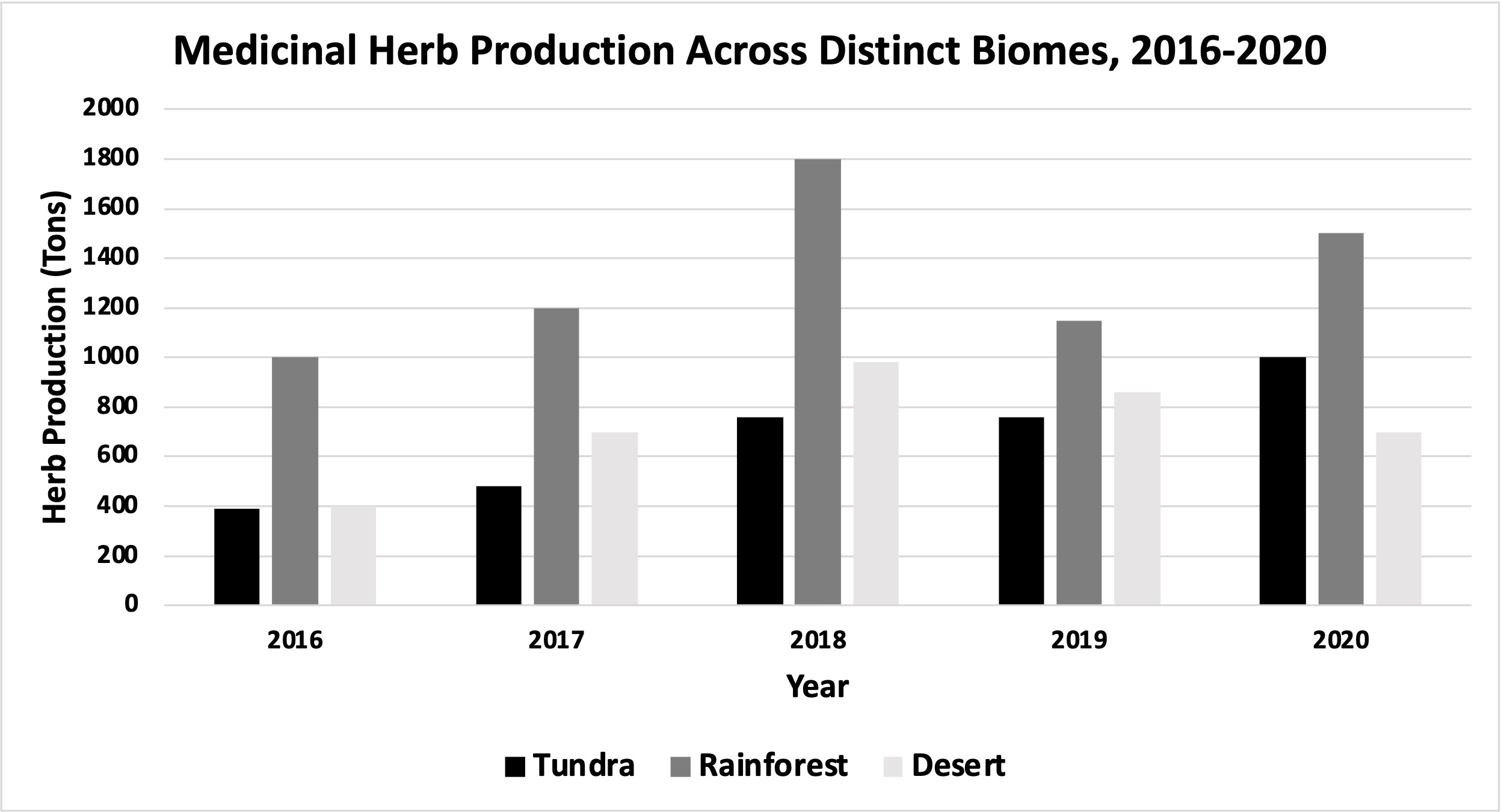 In recent years, there has been a marked increase in the global demand for natural medicinal herbs. This trend has driven researchers to explore the productivity potential of various biomes including rainforests, tundras, and deserts. Each of these biomes, with its distinct characteristics, harbors unique plant species that hold significant importance in traditional medicine. To investigate the herb-producing capabilities of these biomes, Dr. Lila Nguyen and her team initiated a comprehensive five-year study. Their results showed that the rates of herb production in the biomes have shifted due to changing intensity of cultivation efforts. For example, the tundra and desert _____
In recent years, there has been a marked increase in the global demand for natural medicinal herbs. This trend has driven researchers to explore the productivity potential of various biomes including rainforests, tundras, and deserts. Each of these biomes, with its distinct characteristics, harbors unique plant species that hold significant importance in traditional medicine. To investigate the herb-producing capabilities of these biomes, Dr. Lila Nguyen and her team initiated a comprehensive five-year study. Their results showed that the rates of herb production in the biomes have shifted due to changing intensity of cultivation efforts. For example, the tundra and desert _____Reading and Writing Module 1 Question 11
 In recent years, there has been a marked increase in the global demand for natural medicinal herbs. This trend has driven researchers to explore the productivity potential of various biomes including rainforests, tundras, and deserts. Each of these biomes, with its distinct characteristics, harbors unique plant species that hold significant importance in traditional medicine. To investigate the herb-producing capabilities of these biomes, Dr. Lila Nguyen and her team initiated a comprehensive five-year study. Their results showed that the rates of herb production in the biomes have shifted due to changing intensity of cultivation efforts. For example, the tundra and desert _____
In recent years, there has been a marked increase in the global demand for natural medicinal herbs. This trend has driven researchers to explore the productivity potential of various biomes including rainforests, tundras, and deserts. Each of these biomes, with its distinct characteristics, harbors unique plant species that hold significant importance in traditional medicine. To investigate the herb-producing capabilities of these biomes, Dr. Lila Nguyen and her team initiated a comprehensive five-year study. Their results showed that the rates of herb production in the biomes have shifted due to changing intensity of cultivation efforts. For example, the tundra and desert _____Which choice most effectively uses data from the graph to illustrate the claim?